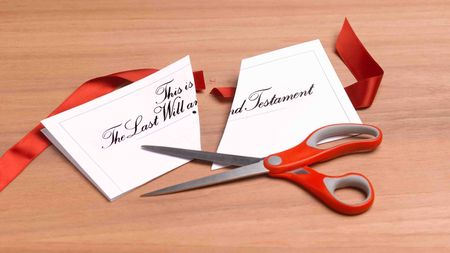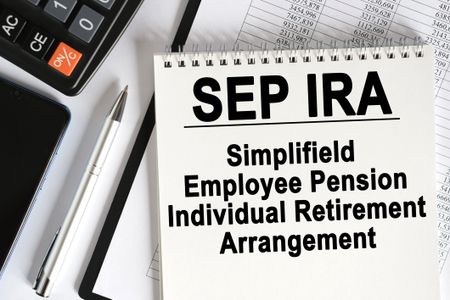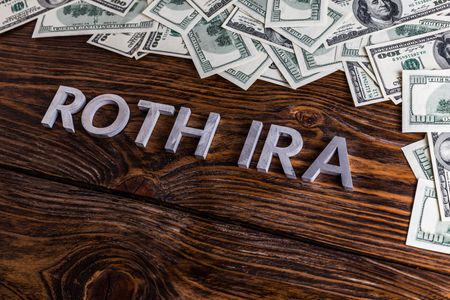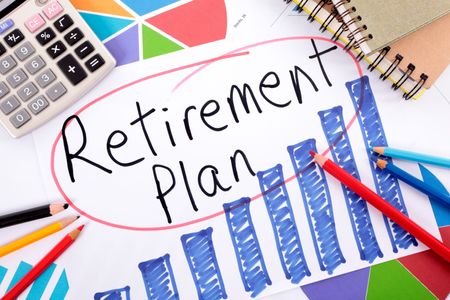From Piggy Bank to Pension
Time is the most powerful weapon in an investor's arsenal. Nothing comes close to it.

Retirement planning begins in your twenties or thirties -- or, better yet, at birth. That's when you should start investing to build a nest egg of stocks and bonds big enough that you canlive off the income and capital gains, rather than off the sweat of your brow and your brain. After 30 years of studying finance, I have found few eternal truths, but the most important -- the Golden Rule of Accumulation -- is this: Start early!
Compound your gains. Time is the most powerful weapon in an investor's arsenal. Nothing comes close to it. In your fifties and sixties, or even your forties, you probably won't have enough time to build a substantial retirement portfolio -- unless you own a business, work for a company that doles out generous pensions or have made some profitable gambles in real estate.
Let's do the numbers. The annualized return for U.S. large-company stocks (as represented by Standard & Poor's 500-stock index) for the past 80 years has been about 10%, not including taxes. Say your goal is to build a nest egg of $1 million by the time you are 55. If you start at age 24 and invest $5,000 a year at an annualized return of 10%, you'll reach your goal. But if you wait until you are 34 to start, you'll accumulate only $357,000 by age 55. If you start at age 44, you'll have just $107,000.

Sign up for Kiplinger’s Free E-Newsletters
Profit and prosper with the best of expert advice on investing, taxes, retirement, personal finance and more - straight to your e-mail.
Profit and prosper with the best of expert advice - straight to your e-mail.
Here's a second example, even more dramatic. Ishmael begins at age 25 to put $2,000 a year into a low-expense mutual fund with an annualized return of 10%. At age 35, he's put $20,000 into the fund. Then he stops investing entirely. But the value of Ishmael's holdings keeps rising, and by the time he is 65, he has a portfolio that is worth $556,000. (We are assuming this is a tax-deferred account, such as a 401(k) or an IRA.)
Now, consider Isabel. She, too, invests $2,000 a year at 10%, but she waits until age 35 to start. She keeps investing for a full 30 years -- a total of $60,000 out of her pocket. At age 65, Isabel's got just $329,000.
In other words, those extra ten years (between ages 25 and 35) produce nearly 70% more money for Ishmael at retirement, even though Isabel's out-of-pocket investment is three times greater.
How can this be? The answer lies in compounding, the fact that interest increases the value of interest as well as the value of principal. If you earn 5% on $1,000, after a year you'll have $1,050. After two years, you'll have not $1,100 but $1,102.50.
As time passes, the power of compounding accelerates dramatically. Imagine that when your daughter is born, you give her a one-time gift of $10,000 worth of stock. Assume that the stock appreciates at 10% annually. On her tenth birthday, your daughter's account will be worth $26,000 (I am rounding up to the nearest thousand in all cases); that is, it will grow in value in that first decade by $16,000. But over the second decade, her account will grow by $41,000; over the next, by $107,000; over the next, by $278,000.
What to expect. One other important fact about compounding is that a small increase in the rate of return can produce a huge impact over time. In the case of the gift to your newborn daughter, if her portfolio returns 10% annually, then $10,000 grows to $4.5 million by the time she is 65. But if her portfolio returns 8%, then it grows to only $1.4 million. If it returns 5%, it grows to a mere $227,000. In other words, half the rate of return produces an account that's less than one-twentieth the size.
But enough numbers. If you're a young person, all you need to know is that you must start early. If you are an older person who has young progeny or young friends, encourage them to start early. If you're particularly generous, set up a long-term trust or a Section 529 tax-advantaged college savings plan, or simply open a mutual fund account that the young person promises not to touch (or perhaps doesn't know anything about).
The next step is deciding what to put into the account. What is the best investment for the next 40 or 50 years? No one can be certain what the world will look like in 2050, but here are some modest assumptions.
First, for the U.S. economy and U.S. companies, the future will look pretty much like the past. We can expect stock-market values to rise at roughly the same rate as they have over two centuries, a little more than 10% annually, on average. Second, the power of Òcreative destruction,Ó as the economist Joseph Schumpeter described the capitalist process, will lead to the decline, merger or bankruptcy of many companies that are currently flourishing.
Third, more revenues don't necessarily mean a higher stock price. The financial guru Benjamin Graham understood this well. Right after World War II, he predicted a boom in the use of commercial airlines, but warned that copious passenger miles might not necessarily translate into copious profits. He was right.
Fourth, globalization will increase opportunities for investment outside the U.S. And fifth, the greatest risk to the buying power of a nest egg will be inflation.
Add three more verities, and you have the basis for devising an ultra-long-term strategy for investing for retirement: Keep expenses low, watch out for taxes and diversify.
Where to invest. A simple but effective portfolio that meets these criteria might look like this: half of your savings in large U.S. companies, held in a managed mutual fund with minimal expenses or in an index or exchange-traded fund; 20% in small U.S. companies, held similarly; and 30% in international stocks, in managed or index funds or ETFs.
What, no bonds? Since 1926, according to the Ibbotson Associates data series, long-term U.S. government bonds have returned an annualized 5% or so, corporate bonds 6%, and stocks, as mentioned, 10%. After subtracting for inflation, the differences are even more striking: Bonds return between 2% and 3%, stocks 7%. A dollar invested in large-company stocks in 1926 grew to be worth $239 in buying power (that is, after inflation) by 2004. A dollar invested in Treasury bonds grew to just $6 in buying power. The only reason to invest in bonds is to dampen risk. Although bonds exhibit far less volatility in the short term than stocks, in the long term, bonds are just as risky as stocks, mainly because bonds are more exposed to the ravages of inflation.
And when you construct a Start Young Retirement Portfolio (which I'll christen SYRP, like the stuff you pour on pancakes), you have vast stretches of time in front of you -- 30 years or more. Even for 20-year periods, stocks have been less risky than bonds. The Ibbotson figures show that since 1926, the worst rolling 20-year period for large-company stocks (1926-1945, 1927-1946 and so on) produced average annual returns of 1.4% after inflation, which is only about one percentage point below the average return for bonds for all 20-year periods. The worst 20-year period for bonds? An annualized loss of 3.2%. For the SYRP investor, bonds stink.
Volatility, however, is worrisome only if you might have to liquidate your investment. When you get into your fifties, you can start moving assets that you hold in tax-deferred accounts from stocks to bonds. In taxable accounts, simply devote your new contributions to bonds and leave the stocks alone, to build up capital gains.
Which brings up the final point: Pay attention to tax consequences. With tax-deferred plans, such as 401(k)s, 403(b)s and IRAs, capital gains and dividends build up tax-free (and should be automatically reinvested). But even a taxable SYRP doesn't have to generate much in the way of taxes if it's invested in a mutual fund such as Jensen Portfolio (symbol JENSX). Jensen has an average annual turnover rate of just 9%, an indication that a typical stock is held for about 12 years. (The lower the turnover, the lower the tax bill.) The fund has a very reasonable expense ratio of 0.85%, and over both the past five and ten years it ranked in the top 10% of funds buying large, growing companies.
Of course, you can control turnover and taxes best if you manage a portfolio of individual stocks yourself. Be my guest, but recognize that you'll have to pay attention to your holdings and make adjustments to your SYRP. Just remember that the key is to pour it on. Now!
Get Kiplinger Today newsletter — free
Profit and prosper with the best of Kiplinger's advice on investing, taxes, retirement, personal finance and much more. Delivered daily. Enter your email in the box and click Sign Me Up.

-
 Stagflation: What It Is and Why Retirees Should Care
Stagflation: What It Is and Why Retirees Should CareStagflation — the economic bogeyman of the 1970's — may return to the US. Here's what it could mean to your retirement.
By Donna Fuscaldo Published
-
 Why Losing Your Job Could Be the Best Opportunity to Plan Your Future
Why Losing Your Job Could Be the Best Opportunity to Plan Your FutureAmid this uncertainty lies an opportunity for strategic reassessment and personal growth.
By Mario Hernandez Published
-
 457 Plan Contribution Limits for 2025
457 Plan Contribution Limits for 2025Retirement plans There are higher 457 plan contribution limits for state and local government workers in 2025. That's good news for state and local government employees
By Kathryn Pomroy Last updated
-
 Medicare Basics: 11 Things You Need to Know
Medicare Basics: 11 Things You Need to KnowMedicare There's Medicare Part A, Part B, Part D, Medigap plans, Medicare Advantage plans and so on. We sort out the confusion about signing up for Medicare — and much more.
By Catherine Siskos Last updated
-
 The Seven Worst Assets to Leave Your Kids or Grandkids
The Seven Worst Assets to Leave Your Kids or Grandkidsinheritance Leaving these assets to your loved ones may be more trouble than it’s worth. Here's how to avoid adding to their grief after you're gone.
By David Rodeck Last updated
-
 SEP IRA Contribution Limits for 2025
SEP IRA Contribution Limits for 2025SEP IRA A good option for small business owners, SEP IRAs allow individual annual contributions of as much as $69,000 in 2024 and $70,000 in 2025..
By Jackie Stewart Last updated
-
 Roth IRA Contribution Limits for 2025
Roth IRA Contribution Limits for 2025Roth IRAs Roth IRA contribution limits have gone up. Here's what you need to know.
By Jackie Stewart Last updated
-
 SIMPLE IRA Contribution Limits for 2025
SIMPLE IRA Contribution Limits for 2025simple IRA The SIMPLE IRA contribution limit increased by $500 for 2025. Workers at small businesses can contribute up to $16,500 or $20,000 if 50 or over and $21,750 if 60-63.
By Jackie Stewart Last updated
-
 457 Contribution Limits for 2024
457 Contribution Limits for 2024retirement plans State and local government workers can contribute more to their 457 plans in 2024 than in 2023.
By Jackie Stewart Published
-
 Roth 401(k) Contribution Limits for 2025
Roth 401(k) Contribution Limits for 2025retirement plans The Roth 401(k) contribution limit for 2025 increased, and workers who are 50 and older can save even more.
By Jackie Stewart Last updated